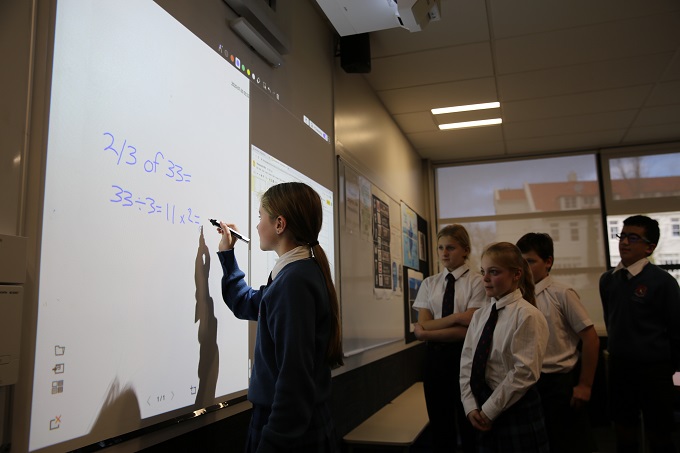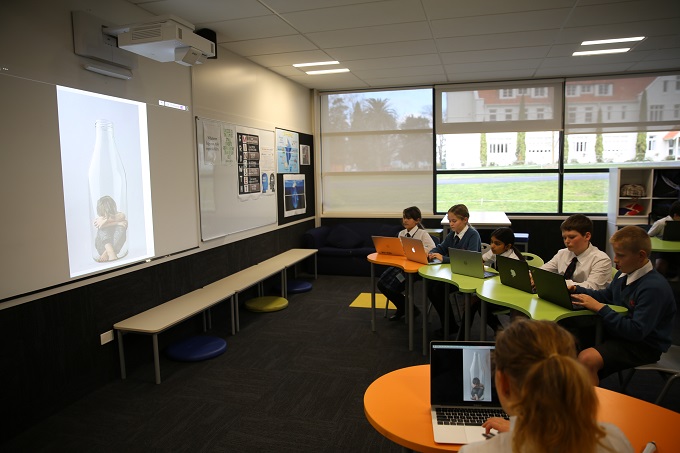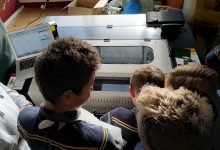Interactive education: One size no longer fits all
The basis of formal education historically started and ended with a bell and a teacher stood at a blackboard asking questions and leading discussions.

This is a feature article from our Term 3 issue of School News. Check out the full edition online now (or pick up your staffroom copy!).
Modern classrooms have moved far beyond this now: the introduction of interactive technology to the classroom unleashed the power of multimedia and forced educators to rethink the status quo.

In the last 10 years, teachers have had to shape-shift from uniform teaching to embracing a variety of newfangled learning environments and immersive classroom technologies. Teachers are now seen as facilitators and ongoing learners. Interactive technology has transformed classrooms and blurred boundaries between teachers and learners. Not too long ago, a TV on wheels plonked at the head of a whole-school assembly was considered a normal occurrence! Today, it would be strange to walk into a school that didn’t have interactive projectors, whiteboards, and a plethora of student-friendly devices to boot.
In 2020, we witnessed an unprecedented shift forward towards interactive technology; not just because of COVID. Anthony Salcito, Vice-President of Education at Microsoft, says schools are actively morphing into “learning hubs”. He said recently, at global education conference Bett 2020:
When you think about the three big investments that schools make, they’re constantly thinking about what’s happening with instruction in the classroom, what’s happening with the operations of their school, and also learning beyond the classroom.
“Over the past few decades, the focus has been heavily weighted on the classroom experience. I think we will see a shift where schools will create a foundation of inclusive, flexible, data-driven buildings and spaces that will enable students to learn beyond those walls.”
Yes, the surprise pandemic shines a light on how technology has and will transform teaching and learning, but interactive technologies will continue to thrive, even after the viral threat has vanished. Lockdown, school closures and the possibility of extended restrictions in the future force us to consider how vital connectivity, digital curriculum and interactive technology are…
Schools must be prepared to deliver education online for students at home or away from a typical classroom environment. When students are in school, educators must consider ways to promote social distancing within a typically crowed educational environment. Interactive teaching technologies offer solutions either way.
When it comes to social distancing interactive projectors offer a great solution, because the screen can be accessible to everyone in most large learning spaces even when students have to social distance, and the beauty of using an interactive projector is that it can still be inclusive, collaborative, and memorable.
Industry Insider
Projectors with widescreen resolution, advanced network connectivity and wireless performance, make it easier to share larger-than-life lessons, tech expert Graeme Durham from Epson, NZ explains:
The key benefit of using interactive projectors is engagement. It is no longer enough for teachers to ‘chalk and talk’ while students listen. An interactive projector allows teachers and students to share content and work on lessons collaboratively, and sharing promotes discussion and engagement.
“Teachers can present lessons in an interactive and engaging manner using modern computing and mobile devices including PC, Mac, Chromebook, iOS/Android and modern software tools like Microsoft inking tools and information can also be sourced by students and teachers using various teaching websites, resources like YouTube, etc.”
“New interactive projector technologies are advancing all the time. There are laser light source projectors with on board interactivity and wireless capability. Quieter, smaller form factor, capable of both pen and finger touch, ultra-short throw means virtually no shadowing when presenting. Keep in mind that projected images are typically more cost effective, less reflective, and most importantly larger than a typical flat panel TV. This means all the class can read detailed information rather than just those in the front few rows they are easy to use in the classroom by a teacher but capable of being managed remotely by an IT manager if required.”









